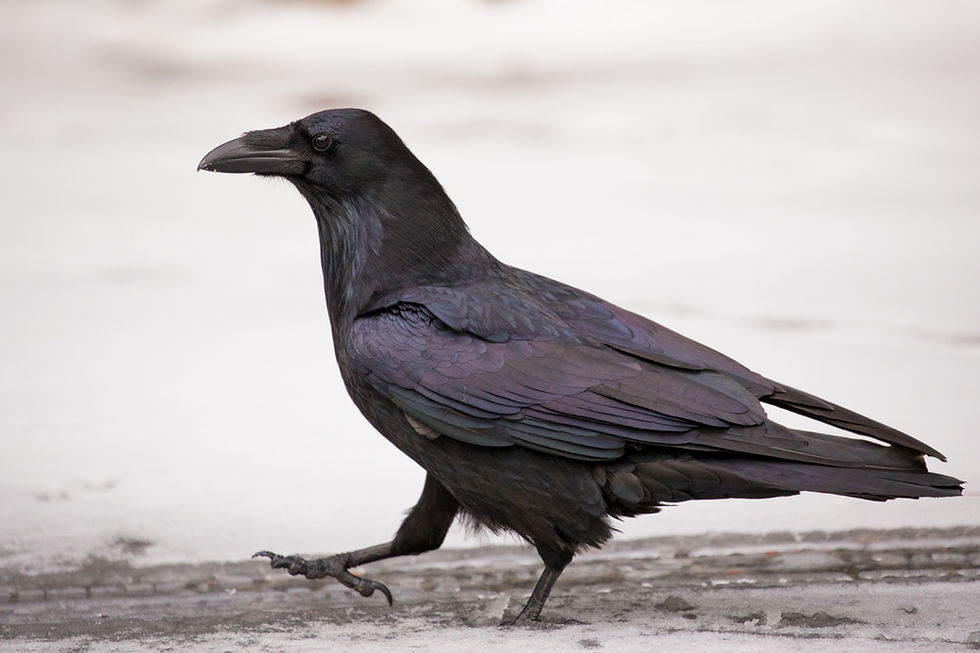Dealing with Bugs
- Helen E. Grose
- May 20, 2022
- 3 min read
Updated: Jan 30, 2024
Bzzzzzz…. Bzzzzzz… smack! Ahh the sound of “bug season”. I remember when I moved to Vancouver and opened my windows for the first time, I was struck by the absence of a screen. In Ontario, it’s a given that any open window will have a screen to keep bugs out.
While some in Muskoka hibernate during bug season, as a nature and wildlife photographer, I can’t really do that – spring is SUCH a great time to be outdoors with a camera. I’ve tried several things to help combat mosquitos and black flies and settled on a few favourites that I find effective, so I thought I’d share them with you.
If you know me, you know I believe it’s important to understand your subject before photographing it. Well, the same can be said of bug control, so let’s start with a few key bits of information about black flies and mosquitoes.
Black Flies
Time of Year
Peak is typically mid-May to mid-June, although you should be prepared to encounter black flies any time from mid-April to mid-July.
I’ve been generous with my timing because the weather (specifically, temperature of the water – black flies lay their eggs in running water) greatly affects when black flies will be out. With the weather trending warmer, I believe we can start to expect bug season earlier. Black flies hatch in late April, but don’t start biting right away. Still, even when they don’t bite, they’re quite annoying!
Time of Day
Sunrise to sunset! Black flies bite throughout the day. They love a hot, humid day, especially. A cool, windy day will help keep them away.
Where to Find Them
Black flies are found near wooded areas, as well as rivers and streams. So, pretty much everywhere in Algonquin Park!
What They Do
Black flies typically swarm before landing. They're attracted to the warm, delicate skin around your face, neck, ears, hairline, ankles and wrists. The females bite, and when they do, they break the skin, which leaves a small, red, itchy mark. They're hardy insects and capable of crawling to get to the best biting spots -- which could be under your clothes!
Mosquitoes
Time of Year
Mid-May to September, although you should be prepared to encounter mosquitoes any time in early May.
Time of Day
Dawn and dusk (and when you're trying to fall asleep in your tent!), although you may find some throughout the day, especially in swampy, or wooded areas.
Where to Find Them
Mosquitoes don't stray far from water, so if there's a water source nearby, they'll find you! Note that mosquitoes lay their eggs in standing water -- and ANY standing water, including your bird bath, so if you see something wriggling around in there, flush it out!
What They Do
Mosquitoes can also swarm, but they're persistent as individuals, too. They'll land anywhere they think they can get a good meal. They can bite through thin, skin-tight clothing. Again, it's the females that bit and they'll leave a swollen, itchy bump behind.
Attracting Bugs Stinks!
Did you know that when you smell good to a human, you also smell good to mosquitoes and black flies? One of the first things I learned when I moved north was to stop using anything with fragrance – laundry detergent, fabric softener, soap, shampoo, and deodorant. All those things add up to a lot of scent. Look for sensitive or eco-friendly formulas to either reduce or eliminate fragrance.
Many outdoorsy people swear by not bathing regularly to help them fend off bugs, and while I wholeheartedly agree with limiting the amount you wash your hair, it’s my understanding that bugs are also attracted to the odours in sweat (after all, I haven’t met a moose who wears aftershave, but they’re still bothered by the flies!). A quick rinse with unscented soap will not only help you cool down (heat also attracts bugs!), but will also reduce those odours, too.
Dress Appropriately
Black flies and mosquitoes are attracted to dark colours. Wearing light-coloured clothing, such as tan or khaki, during bug season is very sensible. It has the bonus of helping to keep you cool, too! I’d also highly recommend long sleeves and pants. Wearing shorts and a t-shirt is providing bugs with an all-you-can-eat buffet. But hey, if you insist, you’re welcome to stand beside me!
Wear things you can apply bug spray to – such as multifunctional headwear and hat. Wearing something on your head and around your neck also reduces the opportunities for these bugs to bite you. I create a new multifunctional headwear every year and this year I decided to go with a light colour specifically for bug season! It might be my favourite design so far, so I’d love to hear what you think!
Use Bug Spray
For me, bug spray is a must. I do use one that contains DEET, but I’m careful not to spray it on my skin, or near my camera equipment.
Whenever possible, I prefer to use (more) natural ingredients on my skin. I use a blend of “botanical” lotion made by the same manufacturer as the DEET spray I use, “Bug Dope” from North Shore Apothecary, as well as my own blend of essential oils. Remember to always read and follow the labels and to do your research about the potential effects of everything you use. Even natural products have side effects – and always look into what is safe to use on or around your pets.
Here’s the recipe I use for my own blend:

If I’m stationary and it’s not windy, I’ll use a Thermacell to create a bit of a shield for mosquitoes especially. Again, it’s a chemical, so check out the safety information. We’ll typically use this in the evening after dinner. We turn it on about half an hour before we expect the mosquitoes to come out and we’ve found it really helps.
Wear Bug Protection
Whether you use a bug jacket or bug hat, these are essential pieces of gear at the height of the season. If the bugs are very bad, I opt for The Original Bug Shirt. Though it’s hot, it offers great, reliable protection. If the bugs aren’t too bad, or I’m walking through a variety of conditions from no bugs to some bugs, I typically use Ben’s InvisiNet over a baseball hat. The visibility is superior, and I don’t feel hindered by extra clothing.
These are black flies and they're UNDER her bug shirt... ewwww! Make sure you cinch up ALL the elastics on your shirt - and don't buy bigger than you need.
Whatever is going to get you outside and enjoying the spring and summer months, do it! You should be more worried about the incredible photo opportunities you’ll miss than about being bitten by bugs. Like everything else in photography, it all comes down to being prepared… physically and mentally!
Check out my video for more details about the specific products I use and how I use them.
Cheers!
--H.
Sources: aside from extensive personal research (lots of itching, slapping and scratching!), I consulted:



Comments